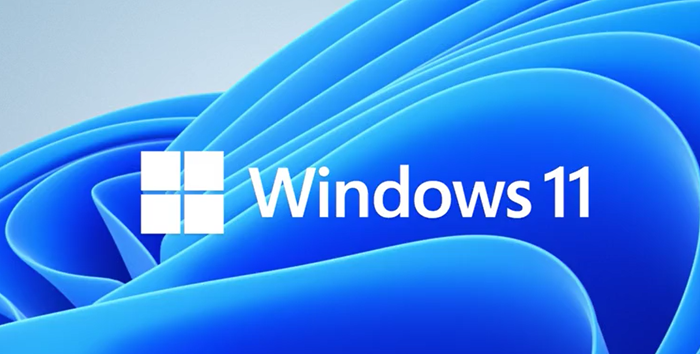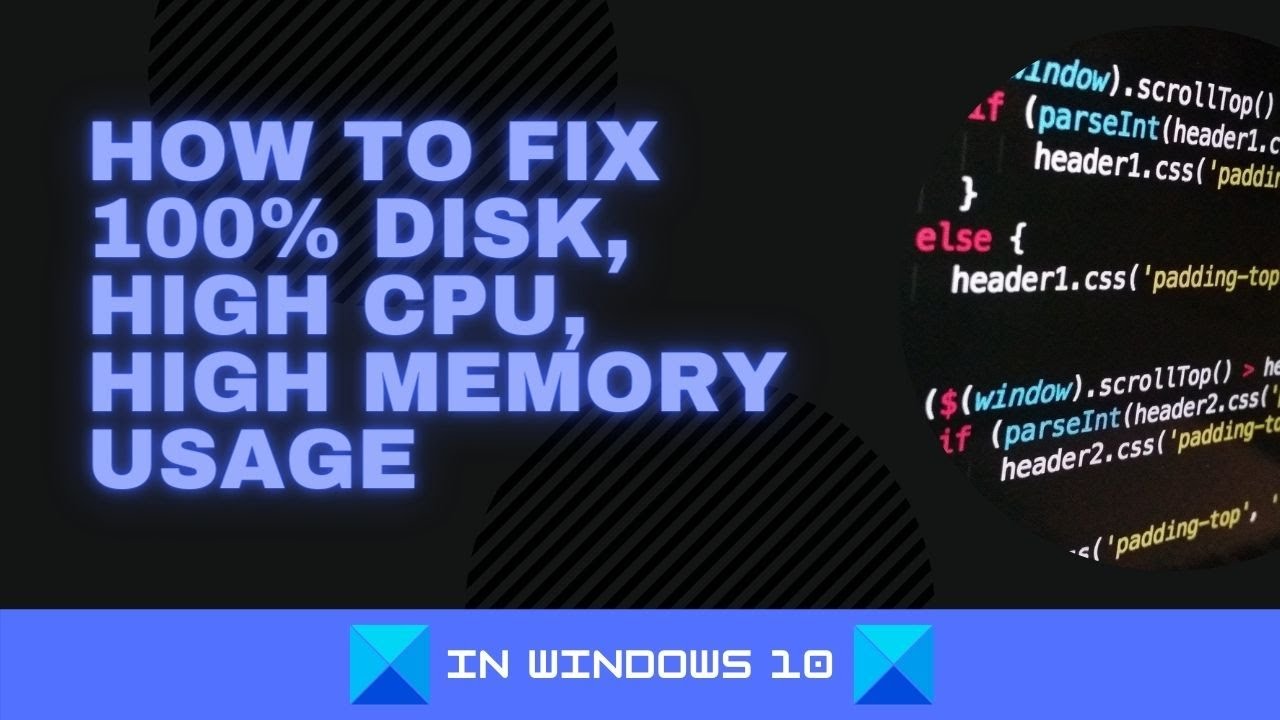How to fix 100% Disk, High CPU, High Memory usage in Windows 11/10
One of the toughest issues to resolve with Windows 11/x/8/7 is when you see a 100% Disk Usage message and your PC suddenly stops responding or responds slowly. While it could have many reasons, it's normally caused when the Deejay Usage is at 100% in the Job Manager. This post besides helps you face constant high CPU or loftier Memory usage bug.
Disk, CPU, Retentivity usage spikes

100% Disk, High CPU, High Memory usage in Chore Manager
In this guide, we take covered a step-past-step procedure to troubleshoot the mentioned issue after studying and implementing methods discussed by others also as our own experimentation. Many forums mention methods like disabling the Superfetch, Prefetch and the BITS services likewise, simply nosotros would non recommend the same. I mean what and how much can you really disable to prepare an issue!

If you lot are facing such an issue, here are a few troubleshooting steps that may assistance you resolve the issue. Create a arrangement restore point start and and so become through the unabridged list and make up one's mind which 1 or more than of the suggestions you want to try.
- Uninstall tertiary-political party browsers
- Run Chkdsk
- Disable Deject-based protection in Windows Defender
- Disable Windows Search Indexer
- Disable Print Spooler Service
- Accommodate the Visual Effects
- Update Device Drivers
- Run SFC & DISM
- Run the Performance Troubleshooter
- Upgrade your firmware or upgrade your RAM
- Utilise Refresh Windows Tool
- Examine System Health Study
- Troubleshoot using Procedure Tamer
- Is Message Signaled Interrupt enabled?
- Plough off Windows write-cache buffer flushing on the device
Since the reasons can be many, the solutions can be many – then go through the unabridged list starting time and come across which may apply in your case.
ane] Uninstall 3rd-political party browsers
Using the Control Panel, uninstall all browsers – except Border and Internet Explorer of course. This is to isolate the issue with the plugins. The other proposition is to remove the plugins i by one from each browser and examination. Adobe Flash and Shockwave Thespian are the usual culprits. Just knowing the fact that the browsers could be re-installed in seconds, this option seems to be easier. Later uninstalling the browsers, please delete the 'Temp', '%Temp%' and 'Prefetch' files. Restart the system and check if it solves the consequence. If it does, look for 10-15 minutes to verify that it doesn't reoccur. Then re-install the browsers.
2] Run Chkdsk
Run ChkDsk and meet if that helps. Open an elevated CMD window, type the post-obit command and hit Enter:
chkdsk.exe /f /r
The ChkDsk parameters do the following work:
- /f Fixes errors detected.
- /r Identifies Bad Sectors and attempts recovery of information.
3] Disable Cloud-based protection in Windows Defender
Open Windows Defender and disable Deject-based protection and encounter.
4] Disable Windows Search Indexer
The Windows Search Indexer is one process that is known to cause this. If y'all do not use Windows Search, yous tin disable Windows Seach Indexer.
v] Disable Print Spooler Service
If this doesn't fix the issue, Run services.msc and disable the 'Print Spooler'. Your printer will stop working afterwards this. But at least it helps isolate the issue. Disabling the Print Spooler service has worked for many users.
One time the Services Manager is opened, scroll downwards to 'Print Spooler' and click on the option to stop the service. If information technology works, you could decide if your piece of work actually needs a printer. If you need the service, a technician level repair would be needed.
6] Adjust the Visual Effects
Suit the Visual Furnishings in Windows. This post will testify you how to tweak Visual Effects to optimize Windows performance.
7] Update Device Drivers
Sometimes Device Drivers can be the culprit. So update your Drivers and come across if that helps. You could employ Windows Update, download it from the manufacturer's website or utilize a free Commuter Update software.
eight] Run SFC & DISM
Run System File Checker as well as DISM to repair the arrangement prototype.
9] Run the Performance Troubleshooter
Open an elevated Command Prompt, blazon the following and hit Enter to run the Functioning Troubleshooter.
msdt.exe /id PerformanceDiagnostic
This troubleshooter helps the user adjust settings to better operating system speed and performance. Here are more suggestions that can help yous troubleshoot Operation issues.
x] Upgrade your firmware or upgrade your RAM
You lot may want to check if you demand to upgrade your firmware or upgrade your RAM.
11] Use Refresh Windows Tool
Another option you have would be to use the Refresh Windows Tool to reset Windows 10 and run across if that finally helps.
12] Examine System Wellness Report
The Functioning Monitor is a good built-in tool that lets you monitor and written report how applications you run affect your estimator'southward performance, both in real-time and by collecting log data for later analysis. It is quite useful in identifying and troubleshooting loftier resource utilization by processes and in generating a Arrangement Health Report of your Windows.
13] Troubleshoot using Process Tamer
Procedure Tamer is a tiny utility that runs in your system tray and constantly monitors the CPU usage of other processes. When it sees a process overloading your CPU, it reduces the priority of that process temporarily, until its CPU usage returns to a reasonable level.
14] Is Message Signaled Interrupt enabled?
In a special scenario, if your Chore Director shows 100% disk utilization on Windows ten devices with Message Signaled Interrupt (MSI) mode enabled, then to solve this install Intel'due south Chipset and Management Engine Interface driver and see.
This mail service will help you if y'all meet Random Disk Usage Spikes.
15] Turn off Windows write-cache buffer flushing on the device
Pijal recommends in the comments below.
Become to Device Manager > Disk drives. Correct-click on your HDD/SSD to shown Properties > Policies. Select "Plough off Windows write-cache buffer flushing on the device" and click OK. Meet if this helps some of you.
If you have any ideas that may help resolve this issue, please post them in the comments. Your suggestions may assist others facing this problem.
Posts about processes using high resources:
- Antimalware Service Executable High CPU, Retention, Deejay usage
- PowerShell causing Loftier CPU usage
- Service Host SysMain High CPU and Retentivity usage
- Services and Controller app High CPU usage
- Explorer.exe High Retentivity & CPU usage
- Excel causes high CPU usage
- Remote Desktop Services causes High CPU
- LSAISO process high CPU usage
- WMI Provider Host Loftier CPU Usage issues
- Modern Setup Host loftier CPU or Memory usage
- Windows Modules Installer Worker consumes High CPU & Deejay Usage
- Desktop Window Manager dwm.exe consumes high CPU
- iTunes High CPU usage
- OneDrive loftier CPU usage problem
- Ntoskrnl.exe high CPU & Disk usage
- Desktop Window Manager dwm.exe consumes high CPU
- Windows Driver Foundation using loftier CPU
- VSSVC.exe high deejay usage
- lsass.exe terminated and High CPU or Disk usage
- Wuauserv high CPU usage
- Spooler SubSystem app high CPU usage
- Windows Shell Experience Host uses high CPU
- SearchIndexer.exe High Deejay or CPU usage
- UTCSVC high CPU and Disk usage
- High CPU usage past IAStorDataSvc
- Windows Image Acquisition High CPU and Disk usage
- Firefox high CPU or Memory usage
- Chrome high CPU, Memory or Deejay usage
- Microsoft Edge High Memory Usage.

Source: https://www.thewindowsclub.com/fix-100-disk-usage-windows-10
Posted by: johnsonlossion.blogspot.com


0 Response to "How to fix 100% Disk, High CPU, High Memory usage in Windows 11/10"
Post a Comment